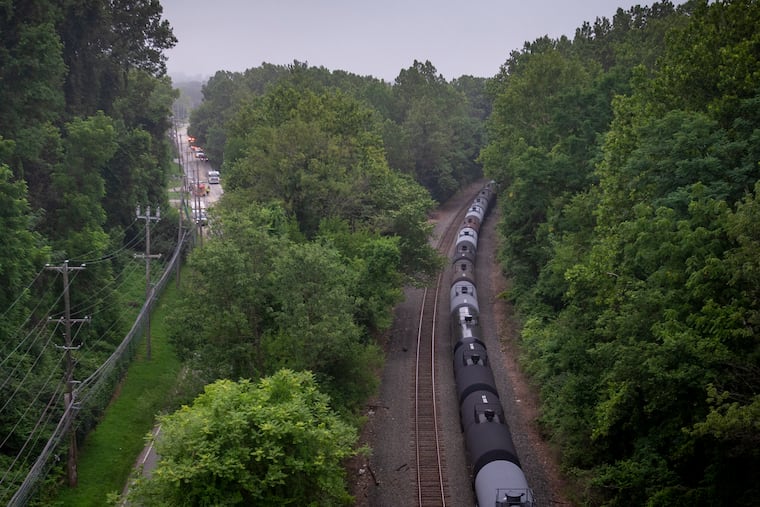ProPublica report highlights Philadelphia-area locations where industrial air pollution exceeds EPA ‘cancer risk’
Coopers Creek Chemical Corp. in Upper Merion, Montgomery County, has an estimated excess lifetime cancer risk from industrial sources of about 1 in 2,100, or 4.7 times the EPA’s acceptable risk.

Several locations in the Philadelphia region show air pollution from chemical companies that exceeds a federal threshold for estimated “excess lifetime cancer risk,” according to an online report and interactive map published Friday by ProPublica. An area of Upper Merion Township ranks as the highest risk in the region, the data show.
ProPublica used advanced data processing software and a modeling tool developed by the Environmental Protection Agency to analyze and map the spread of cancer-causing chemicals from thousands of sources across the U.S. between 2014 and 2018. The news organization said the data offer “an unparalleled view of how toxic air blooms around industrial facilities and spreads into nearby neighborhoods.”
The report’s authors caution that their map and data are not to be used for “a site-specific risk assessment, and cannot be used to tie individual cancer cases to emissions from specific industrial facilities.”
ProPublica’s report, “Poison in the Air,” identified more than 1,000 hot spots of cancer-causing air across the country. Texas and Louisiana were found to have the most. One-quarter of the 20 hot spots with the highest levels of excess risk are in Texas. And most of the remainder are in Southern states known for their weak environmental regulations.
However, the article noted a manufacturing facility in New Castle, Del., that blanketed a day-care playground with ethylene oxide, a highly toxic chemical associated with lymphoma and breast cancer. Ethylene oxide is the biggest contributor to excess industrial cancer risk from air pollutants nationwide, the analysis found.
That facility, owned by Croda Inc., produces ethylene oxide as part of its surfactant manufacturing — compounds used in soaps, detergents, and lubricants. Delaware Public Media reported earlier this year that the plant had to shut down for several months due to air pollution permit violations.
The ProPublica data show the location has an estimated excess lifetime cancer risk of about 1 in 2,200, or 4.4 times the EPA’s acceptable risk. (The agency’s threshold for “acceptable” is when the estimated cancer risk over a lifetime averaged for five years is at or above 1 in 100,000, the report states.) Although there are other industrial and chemical facilities in the area, the news organization reports that Croda accounts for 99% of the risk.
The data also highlighted two locations in the Philadelphia suburbs above the EPA’s acceptable risk level. Coopers Creek Chemical Corp. in Upper Merion, Montgomery County, has an estimated excess lifetime cancer risk from industrial sources of about 1 in 2,100, or 4.7 times the EPA’s acceptable risk.
A representative for Coopers Creek could not be immediately reached for comment.
Emergency crews were called to the River Road plant as recently as July for a hazmat incident.
Data show National Refrigeration & A/C Products, which has a facility in Bensalem, Bucks County, has an estimated excess lifetime cancer risk from industrial sources of about 1 in 6,700, or 1.5 times the EPA’s acceptable risk.
Industry and the EPA are rarely required to monitor for air toxins, the ProPublica report says, “leaving residents near these plants chronically uninformed about what they’re breathing in. And when companies report their emissions to the EPA, they’re allowed to estimate them using flawed formulas and monitoring methods.”